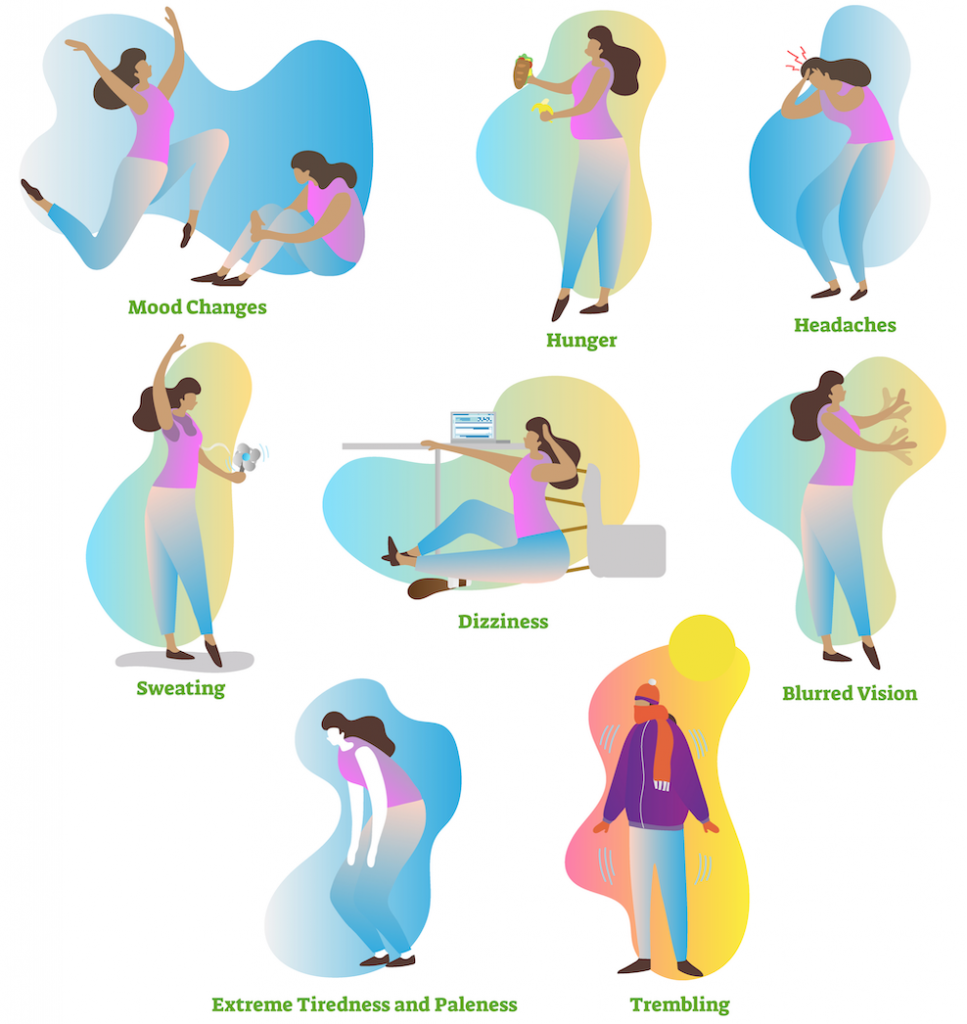What is low blood glucose?

Hypoglycaemia or ‘hypo’ is the name given to a low blood glucose level (generally a level less than 4mmol/L). Watch the video below to learn more about hypos and the importance of blood glucose monitoring.
The key to managing your diabetes well is to maintain stable levels of blood glucose. Hypos are a potentially dangerous side-effect of insulin treatment. The following advice will help you prevent, recognise, and treat an episode of hypoglycaemia.
What are the warning symptoms of a hypo?
Warning symptoms vary from person to person. However, you will become familiar with your own individual warning signs that your blood glucose level is too low. They can include any of the following:

You may not be aware of late warning signs yourself, but other people may notice you becoming pale, moody, aggressive, irrational, confused, unable to concentrate or unable to co-ordinate your movements.
What causes a hypo?
It is important to be aware of what causes a hypo in order to prevent it. The following are all possible causes:
- Eating too little or no carbohydrate at your last meal (e.g. no bread, pasta, rice, potato or cereal)
- Missing a meal or eating it later than usual
- Taking too much insulin
- Taking more exercise or being more active than usual. Exercise means that you ‘burn through’ glucose more quickly. A delayed hypo can occur several hours after your exercise or activity. Always make sure you have a suitable carbohydrate snack when you exercise
- Drinking alcohol may cause you to have a delayed hypo (overnight or even the next day- see later). Always make sure you have a suitable carbohydrate snack or meal if you drink alcohol
- Using a different injection site from usual may mean that insulin is absorbed at a different rate.
- Spending time in a sauna or steam room, which can cause insulin to be absorbed more quickly
- Leaving your insulin in direct sunlight or otherwise exposing it to high temperatures, such as storing it beside a cooker or oven
- Weight loss (whether intentional or not). If you lose weight, then your medication may need to be reduced
- Occasionally the cause of a hypo may not be obvious. If you are not sure, contact your diabetes care team for advice.
How can I treat hypoglycaemia?
The hypoglycaemia flowchart gives clear advice on what you or the person you are with should do if you experience a hypo.
 Loading…
Loading…
Most hypos will be mild hypos and you will be able to treat them. You should make family and friends aware of how they can help you if you have a hypo and are not able to help yourself.
To download a treatment guide for treating mild, moderate and severe hypos, please click here.



Leave a Reply
You must be logged in to post a comment.